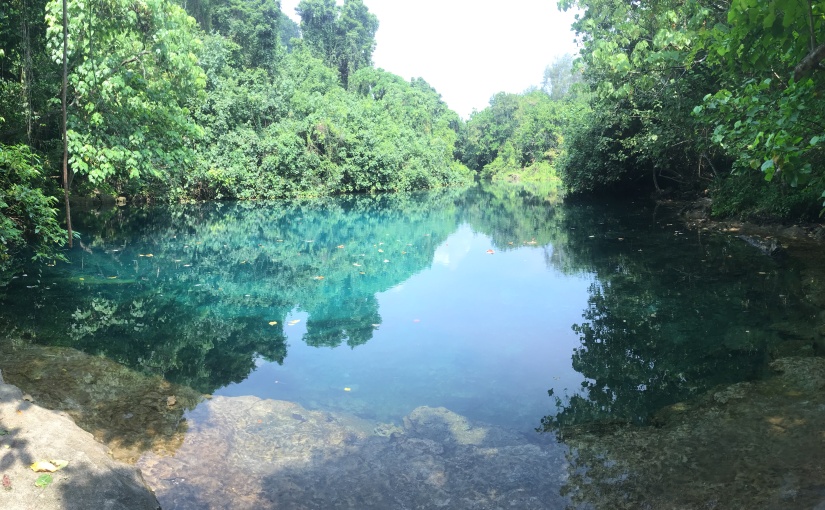The ward is mostly run by a medical registrar, Dr Lawrence, and a Chinese physician as well as an intern. Dr Lawrence is seriously impressive, examines patients extremely thoroughly and has incredible clinical reasoning skills. There is a ward round in the morning, and following the round there is a 5-6 patient clinic for recently discharged patients, cardiac patients and the like. There is also an outpatient clinic area that runs clinics throughout the day.
On the ward I found out that most if not all of the patients that were admitted from ED while I was there ended up dying. It was probably a combination between their physical state/comorbidities, lack of resources at the hospital, and the late stage of presentation. This was pretty shocking, as I feel they may have lived if they had have received care in Australia or New Zealand. One patient, who did survive their admission, had a STEMI. Usually they use streptokinase as a thrombolytic agent, however they had run short – so she was given some aspirin and left in a bed for a few days to recover.
There are plenty of ‘asthma’ patients on the ward, and inhaler therapy occurs on ward round. From what I saw, most patients had terrible technique before education – the aerosol spray snuck out through nostrils and the corner of mouths. There aren’t a lot of spacers going around, and improvised ones made of water bottles worked very well. The education was done by the medical team and the head nurse.
The devastating burden of cardiovascular and cerebrovascular disease was really evident during this week. Patients in their 30s and 40s were having strokes and heart attacks, and without gold standard therapy or rehabilitation, it has a huge impact on their lives. There is also a lot of rheumatic heart disease, but no public outreach as far as I saw. There isn’t an echo probe in Santo for monitoring of these patients, and certainly valve repairs cannot be done in Santo. Many people live rurally, so primary health care is not utilised as much as it is in Australia. Many people do not attend school, so education and health literacy is lower than that in Australia. It’s really sad, and makes me think about how public health campaigns and education make a huge difference in populations. It is also really sad to think that these conditions, seen in a developing world, often affect Australian Indigenous populations despite living in a wealthy country with programs and funding in place.
What really struck me during this week was the juxtaposition between doctors’ knowledge and the treatments available. The docs in Vanuatu are fantastic and are up to date in terms of evidence based medicine and best practice, but are so limited in their capacity to treat patients. Some things are never available in Vanuatu, but it seems much of the time supplies have just run out and they are awaiting more to arrive at some predetermined date. It’s interesting to think about how care would fluctuate depending on supply level, and outcomes would fluctuate accordingly.
A few of us did a half-day fishing charter this week, and we got very lucky. It was the very end of the fishing season, so we were lucky to catch one rainbow runner which we cooked up for dinner. We also did some snorkelling, and saw two adult and one baby dugong. This was through Santo Island Fishing, run by the husband of the lady running Santo Horse Riding. We got quite a local insight from Fabrice who runs it, who was born and raised in the area. His opinion is that things have really gone downhill in Vanuatu after independence from France, as the government now is corrupt and poor. Again, part of the fee went towards projects in the local community.


